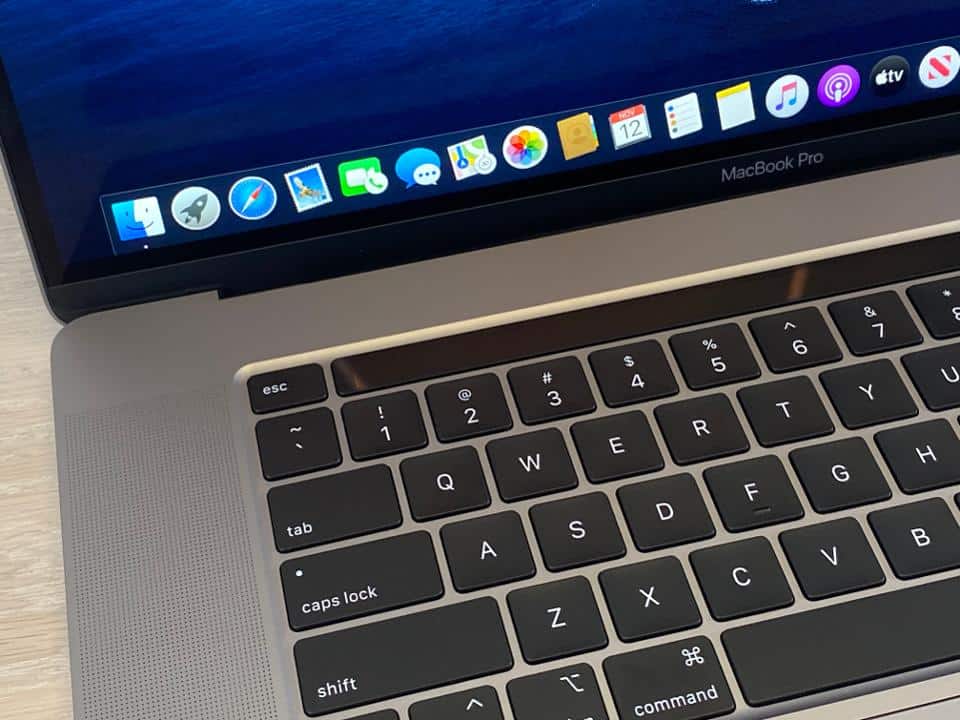The recent launch of the new 13-inch MacBook Pro from Apple completes this round of updates for its MacOS laptops. Hardware wise there’s very little difference between the MacBooks and the equivalent Windows 10 laptops. So why have the new machines been met with resounding critical acclaim?
The keyboard.
For five years the MacBook, MacBook Pro, and MacBook Air were saddled with the butterfly keyboard. The thinking behind the design was in keeping with Apple’s trends. The physical keyboard would be lighter and slimmer, both welcome features when designing the new laptops. The keys had more stability and allowed for more accurate typing.
But Apple’s implementation was flawed. Dust, crumbs, and other small particles could get trapped in the mechanism and would jam keys so they would not be registered, the eye would become stud and dole, triple, or quadruple type a letter from a single key press. It was an unpredictable nightmare for anyone working at speed or on large documents.
The keyboard is the primary interface for a laptop. Apple was selling a laptop with a primary interface that was, in my opinion, not fit for purposes. And it kept selling it. It was clear to independent repair specialists that Apple was trying different fixes to make the keyboard work. But the machines being purchased still had sub-standard keyboards. Joanna Stern of the Wall Street Journal demonstrated this with a wonderful article that allowed you to decide just how broken her keyboard was. Here it is with the ‘e’ and the ‘r’ key broken.
“Nop, I havn’t fogottn how to wit. No did my dito go on vacation.
‘You s, to sha th pain of using an Appl laptop kyboad that’s faild aft fou months, I could only think of on ida: tak all th bokn ltts out of my column. Thn I alizd that would mak th whol thing unadabl. So to…”
Thanks to Apple’s tight control of the ecosystem (primarily the monopoly it has over MacOS powered hardware) users needing a MacOS laptop for their applications, development, or media production chain had little choice but to buy Apple and endure. Of course the keyboards work as they come out of the box, you can use external keyboards, and not every single keyboard would break… but emotionally every keyboard was a defect waiting to go off.
Tim Cook’s Apple has finally decided to do what it should have done a long time ago. Fix an obvious fault in its flagship laptop.
The process started in late 2019, as the 15-inch MacBook Pro picked up a larger screen and became the 16-inch MacBook Pro. As with every laptop release, the table stakes of the specifications were met with updates to the processor, storage options, and tweaks for improved performance (notably in thermal control and battery control). In other words, a maintenance release of the hardware It stayed in lockstep with the competition, but didn’t push onwards or try to change the landscape.
The same was mostly true of March’s update to the MacBook Air and this month’s update to the MacBook Pro. The specs were raised to meet the competition, but nothing that exceeded the various Windows 10 powered laptops. Arguably the 2020 releases are less effective than the 16-inch MacBoko Pro because the new display sizes many expected were delayed until 2021.
But the keyboard was changed. Although Apple has slapped a ridiculous marketing name on it, the Magic Keyboard is a return to the reliable scissor-switch mechanism, and with no design flaws reported since the launch of the 16-inch laptop its probably safe to say the keyboard worries are over.
To me that explains the rapturous response to the new Macs, especially the new 13-inch MacBook Pro. Yes the specs are higher (but then so are specs on Windows 10 laptops), yes the software has been improved (but then so is Windows 10), and yes that all adds up to more performance (but then, well, you get the idea).
The excitement, the digital column inches, the praise all being heaped upon the new MacBook Air and MacBook Pro machines, all center on one area.
It took five years to fix the keyboard.
Well played, Apple. Well played.

